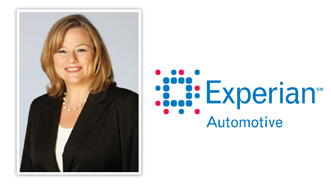Experian: Leasing is Becoming More of a Lender Priority

COSTA MESA, Calif. –
Amid the auto industry’s severe challenges, financing struggles and the bankruptcies of two major players, the leasing market took its lumps in 2009 with many companies scaling back or pulling out of the market altogether.
But 2010 was a different story.
As of the end of the third quarter, leasing was up across the board, according to leasing data on dozens of brands provided to Auto Remarketing by Experian Automotive.
In fact, during the third quarter, 29 of the 34 brands included in Experian’s data (after removing discontinued Hummer and Pontiac brands from the equation) showed a year-over-year increase in the the proportion of new-vehicle financing that new-vehicle leases represented.
Leasing accounted for 10.2 percent of vehicles that were financed in the third quarter, Melinda Zabritski, director of automotive credit at Experian, revealed to Auto Remarketing. This compares to 6.8 percent in the same period of 2009.
Since reaching 12.1 percent in the first quarter of 2008, the proportion of vehicle financing devoted to leasing had dropped sequentially each quarter before reaching the 6.8 percent level in the third quarter of 2009, according to Experian’s data.
In the time since then, it has been on the upswing, for the most part. In the fourth quarter of 2009, leasing represented 8.8 percent of auto loans during the period, before climbing to 9.5 percent to start off 2010.
The second quarter of 2010 saw leasing hit 10.5 percent.
“It’s not yet what we saw in 2008 and 2007, but we’re started seeing it pick up again,” said Zabritski.
There is an overall growth in leasing, she explained, “and these lenders who have been doing leases are making it more of a priority and/or putting more marketing behind the programs they were doing.”
Many lenders are “re-examining leasing,” Zabritski noted.
As is typical, the luxury brands are dominating when it comes to the proportion of new-vehicle loans that are new-vehicle leases
Infiniti topped the industry on the new-vehicle side during the third quarter of 2010, as 63.1 percent of its new-vehicle financing was for leases. Jaguar (62 percent) was close behind.
Lexus (59 percent), Porsche (57.4 percent) and BMW (56.4 percent) rounded out the top five.
Among the non-luxury brands, Volkswagen led the way with third-quarter new-vehicle leases representing 36.7 percent of its new financing, up from 30.1 percent in the same period of 2009.
Next was Honda at a 31.9 percent share, which improved from 18.7 percent in the prior-year period. Mercury followed at 31.8 percent, as it showed a major increase from 6.6 percent in the third quarter of 2009.
Experian indicated that Mini had lease penetration of 30.1 percent (up from 17.5 percent), and Toyota rounded out the top five for non-luxury brands at 29.2 percent (up from 13.7 percent).
Zabritski also offered a breakdown of the lenders that commanded the most share of the leasing market in the third quarter of 2010.
“In looking at lenders who are doing leasing in the marketplace, it is for the most part (done) by the captives,” Zabritski noted.
Toyota Financial Services led the way, taking home a 21-percent share of the overall leasing market (including new and used leases). Regarding just the new-vehicle lease market, TFS commanded a 21.6-percent share.
Honda Financial Services was second, as its share of the overall leasing market was 18.9 percent. On the new-vehicle side of the leasing market, its share was 19.5 percent.
Nissan/Infiniti’s captive was No. 3, taking an 11.6 percent share of the overall leasing market and a 12-percent share on the new side, in particular.
Outside of the captives, some of the “alliance” lenders like Chase Auto Finance and U.S. Bank are commanding some of the market, as well.
Chase’s share of the overall lease market was 4.5 percent during the third quarter, U.S. Bank came in at 3 percent and Fifth Third Bank came in at 0.1 percent.
Interestingly enough, the market shares for Chase and Fifth Third were down from the year-ago period (these lenders were at 5.8 percent and 3.2 percent, respectively, in the third quarter of 2009), but now appear to be devoting a greater proportion of their portfolio to leasing in the most recent period.
For example, leases represented 8.1 percent of Chase’s transactions in the third quarter of 2010, up from 5.5 percent in the year-ago period, Zabritski highlighted. Likewise, leasing at U.S. Bank climbed from 14.7 percent to 17.9 percent.
“One thing has changed is the percentage of their lending that focuses on lease,” Zabritski shared. “This shows that for these two lenders, leasing is representing a larger percentage of their overall financing.”
And, of course, the widespread gains made in the leasing market in 2010 certainly help dealers as they, like many other avenues of the industry, continued to rebound.
“I think any kind of expanded program … it gives dealers another opportunity to sell cars,” she stressed.
For dealers who rely more heavily on leasing, it provides yet another avenue for them to move units, Zabritski noted.
And that can prove crucial in an automotive market that continues to rebuild.
CNW Shares Its Take
Offering some insight into the fourth quarter, CNW Research provided some year-to-date data regarding the lease market in November.
Overall, leasing commanded a 25.4 percent share of vehicle purchases (compared to 67. 51 that were financed and 7.1 percent that were cash sales).
Though year-to-date lease penetration was down from October (when it was at 27.55 percent), it remained stronger than the year-to-date rate through November 2009 (about 22 percent).
Full-year 2009 came in at a 22.16 percent level and full-year 2008 reached 24.17 percent.
“Leasing continues to creep upward as a preferred source of financing for virtually all automakers,” company president Art Spinella said in December.
Looking at different automakers, the percent of Ford transactions through the first 11 months of the year that were leases came in a 25.4 percent, while Honda was at 28.46 percent and Toyota totaled 29.28 percent.
The company clarified that this data “includes those leased through independent lease companies and financial institutions that otherwise are reported to automakers as ‘cash’ sales.”
Brand loyalty has played a big role is spurring leases, Spinella suggested.
In fact, almost two-fifths (39 percent) of lessees with 2008 contracts closing this year stayed with the brand. Meanwhile, only about 26 percent of finance buyers tend to do the same, he pointed out.
“The drive for leasing among some automakers — especially second tier Asian and weaker Detroit nameplates — is the extremely positive result leasing has on brand loyalty,” he explained.
“Lessees tend to stick with the make and model of the current leased vehicle when the lease contract ends — at least in higher proportions than finance buyers,” he added.
Subscribe to receive our daily e-newsletter and never miss the latest industry news, trends, and insights across the used-car and remarketing space.


